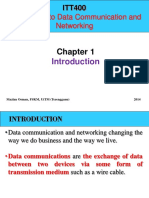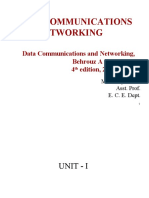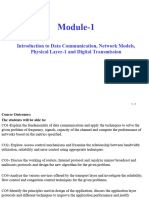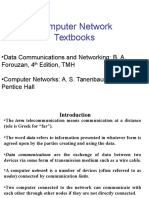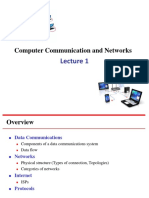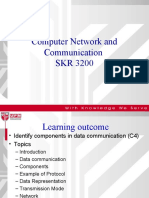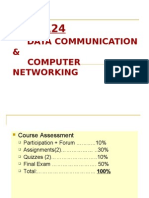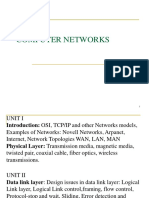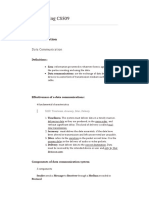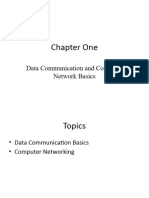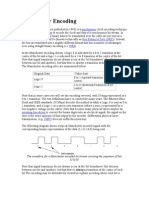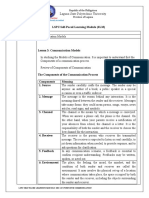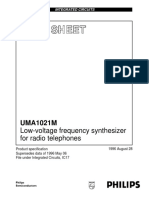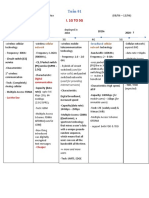0% found this document useful (0 votes)
32 views36 pagesLecture - 1 Data Communication & Networking
The document outlines a Communication Engineering course, covering topics such as data communication, network components, and various communication topologies. It emphasizes the importance of effective data delivery, accuracy, and timeliness, as well as the roles of different network types like LAN, MAN, and WAN. Additionally, it discusses protocols governing data communication and the structure of the Internet.
Uploaded by
julfikar.sarkerCopyright
© © All Rights Reserved
We take content rights seriously. If you suspect this is your content, claim it here.
Available Formats
Download as PPTX, PDF, TXT or read online on Scribd
0% found this document useful (0 votes)
32 views36 pagesLecture - 1 Data Communication & Networking
The document outlines a Communication Engineering course, covering topics such as data communication, network components, and various communication topologies. It emphasizes the importance of effective data delivery, accuracy, and timeliness, as well as the roles of different network types like LAN, MAN, and WAN. Additionally, it discusses protocols governing data communication and the structure of the Internet.
Uploaded by
julfikar.sarkerCopyright
© © All Rights Reserved
We take content rights seriously. If you suspect this is your content, claim it here.
Available Formats
Download as PPTX, PDF, TXT or read online on Scribd
/ 36



